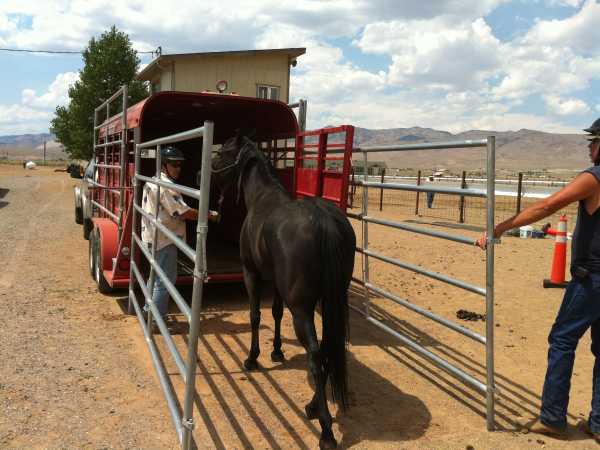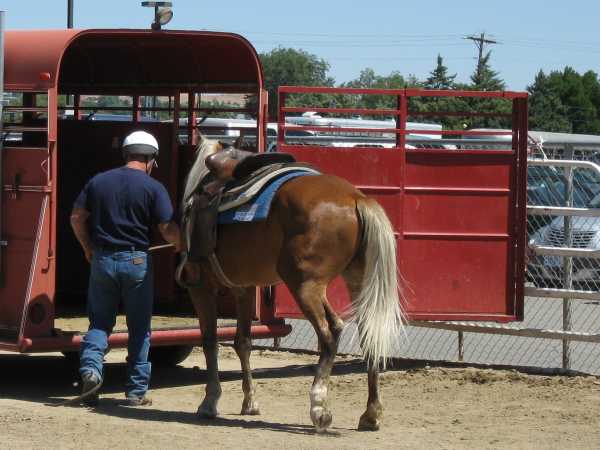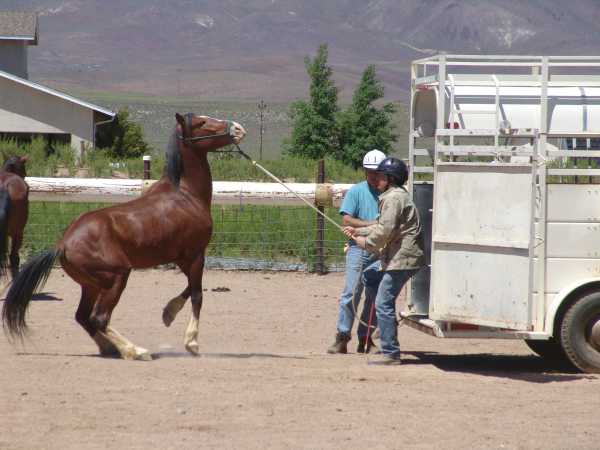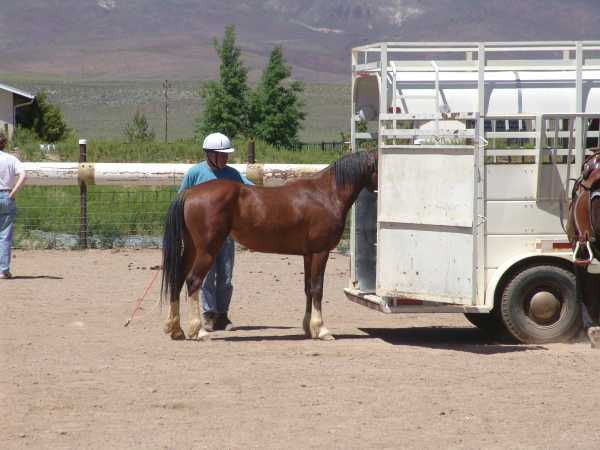|
Loading chutes, when properly applied, can drastically improve loading efficiency. We use them on a regular basis when loading wild, unhandled and overly stressed horses. They are also advantageous in highly chaotic environments. Loading chutes can be used by a team of people or by an individual horse owner who needs to vacate but whose horse will not load.
Loading chutes limit the direction that a horse can move. When properly used the horse tends to focus more on what's up front (i.e., the trailer) and not a dozen other directions that he might want to go. If necessary, a chute can be closed from behind leaving the horse no choice but to go forward. Usually once the horse perceives that he is surrounded by barriers with only one "exit" (the trailer entrance,) he will check out the trailer interior and enter.
A dark trailer interior can be intimidating to an anxious horse. The loading chute gives the horse a place outside the trailer where he is compelled to check out the inside and actually process where people are trying to send him.
This is how a trailer looks to the horse.
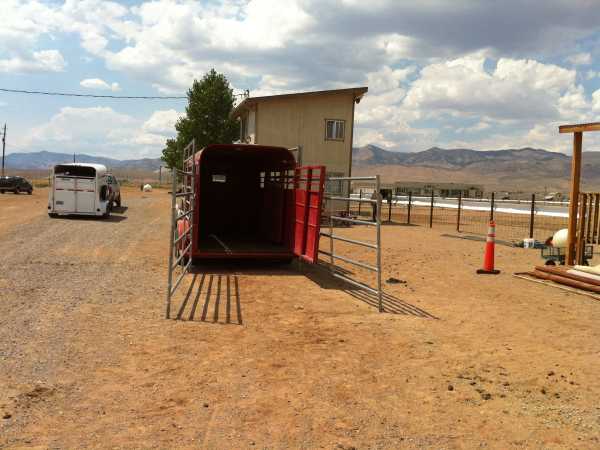
Trailers lights are important at night, however they can also be useful on
bright days when the trailer will still look comparatively dark from the outside.
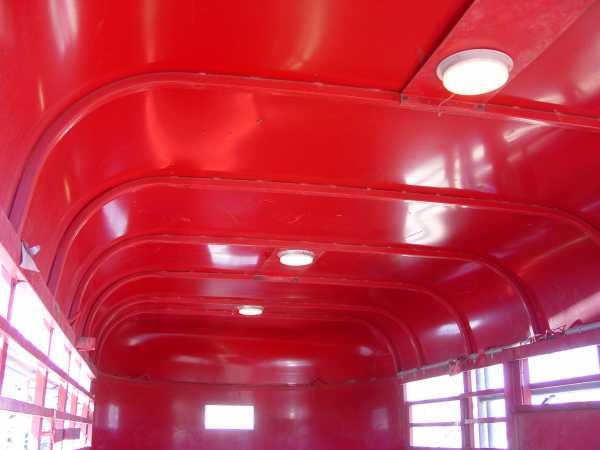
The following sequence is of a mare that could often be extremely difficult to load and had actually hurt people. We set up the chute to video the techniques needed to load difficult horses. In the first attempt the mare wanted to back up in the chute, however a few seconds later she was loading herself, take after take.
The ends of the chute panels are spread slightly like a funnel. As the horse nears the trailer, the chutes are closed slightly, but done so quietly so the horse won't spook and run backwards. Once the horse has checked out the interior of the trailer, the far panel is brought inwards slightly while the handler takes a position behind the horse's shoulder. The movement of the trailer gate attached to the panel is usually sufficient to motivate the horse to load. If the horse doesn't load, the panels have drop pins and can be closed together to form a "V" until the horse is willing to enter the trailer.
Entering the chute. The panel handlers have to be careful not to exert pressure on the horse.
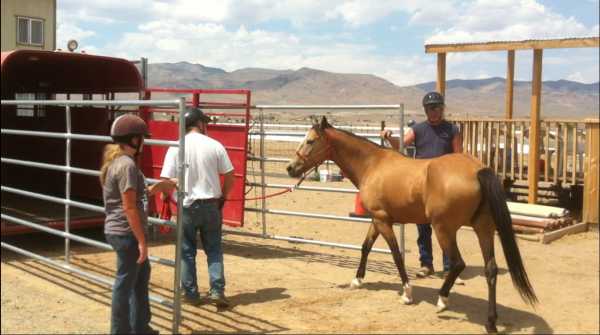
The horse checks out the trailer interior. The handler gets behind the shoulder.
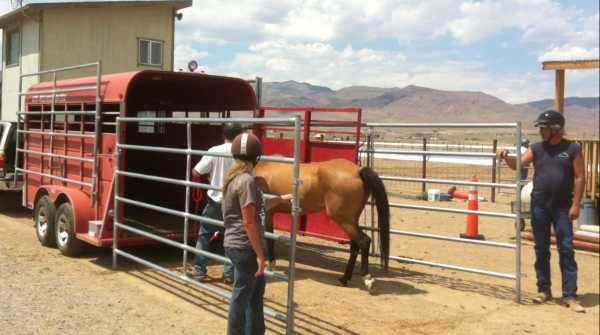
Once the horse is settled, the panels are slowly closed.
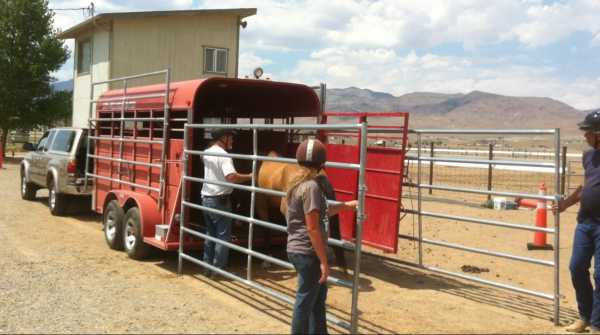
This horse loaded before the panels closed.
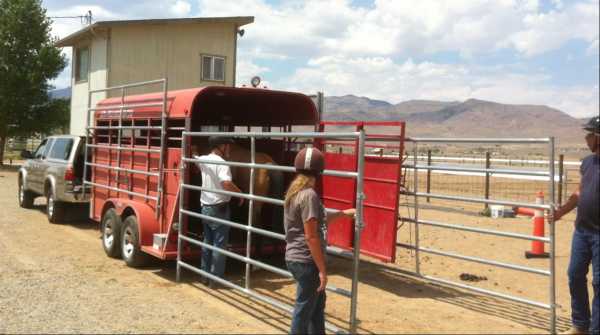
If a horse refuses to move forward, one of the chute handlers can tap the horse on the upper hind leg with a handling stick until he moves. A rhythmic tapping, gradually increasing pressure, often achieves the desired results without overly stressing the horse or provoking a kick at the stick.
This driving process must be timed so that the horse is focused forward at the time the pressure is applied. Anyone inside the chute enclosure with the horse should be at the shoulder or some similarly low risk position. Panel handlers need to not be "dead legged" as they may need to adjust the panels outward if the horse displays a claustrophobic reaction.
Motivating the horse to move forward.
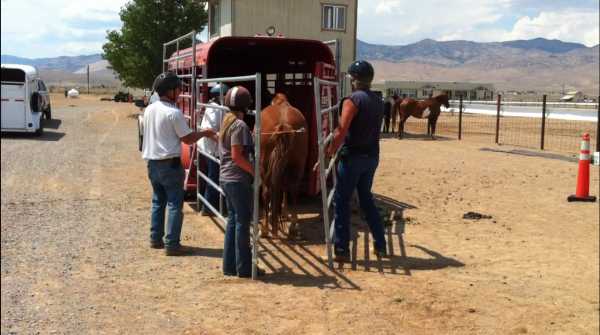
It is critical during loading when a handler is inside the chute for the purposes of leading the horse up to a forward tie ring that the handler simply guides the horse forward, avoiding triggering opposition reflex that would tend to cause the horse to back into the panels. With an appropriate degree of pressure from outside and encouragement by the handler to move forward, almost every horse will quietly enter the trailer.
We have actually used this technique to load injured wild
horses that had never been handled before, using the chute in order
to halter the horses, then move them quietly into the trailer.
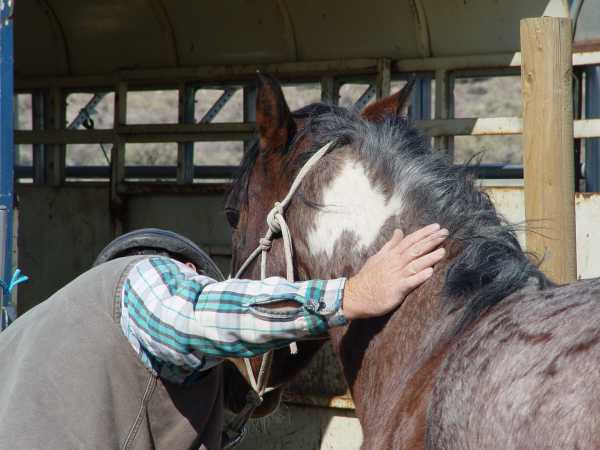
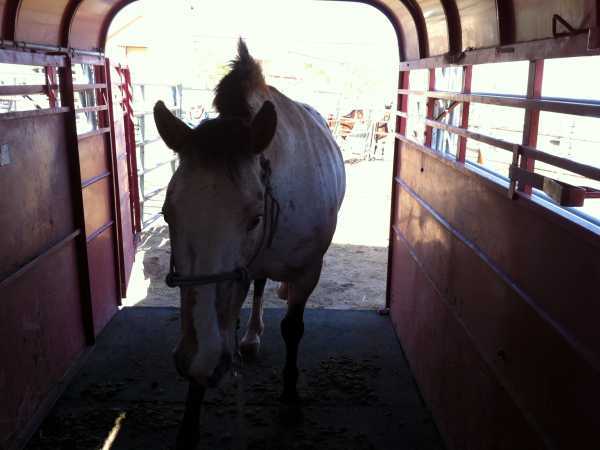
|




